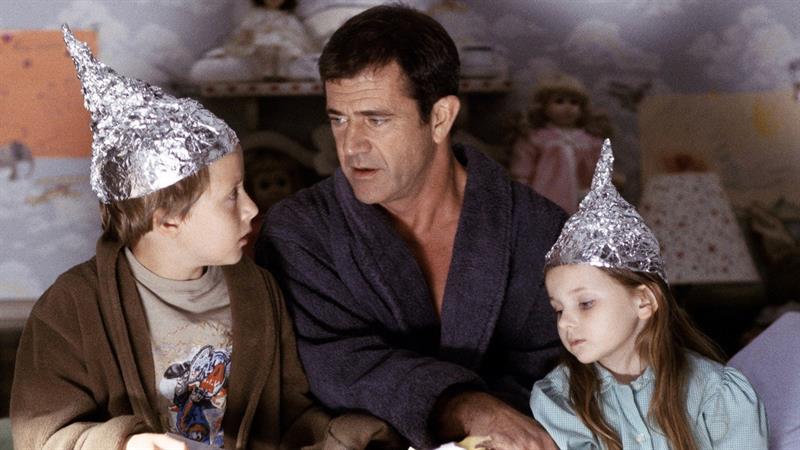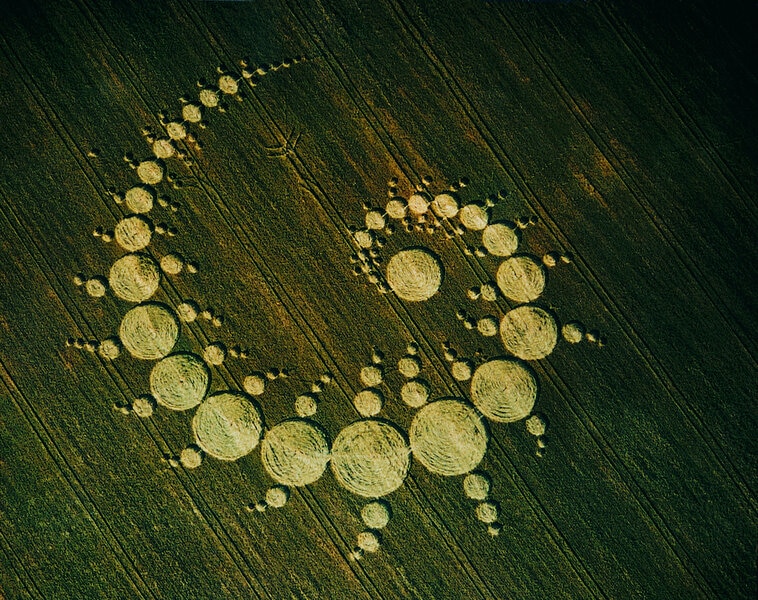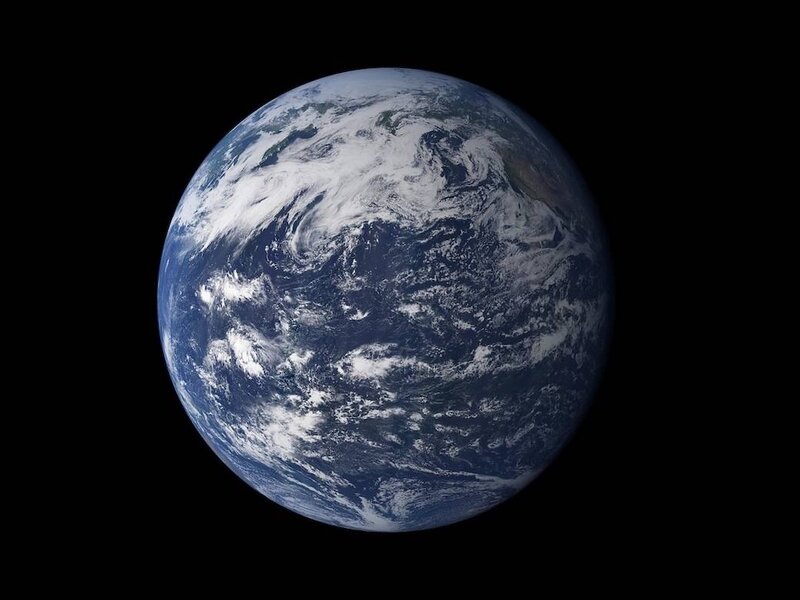Create a free profile to get unlimited access to exclusive videos, sweepstakes, and more!
Crop circles and water allergies: The science behind 'Signs'
We're fending off interstellar assailants with Super Soakers.

By 2002, M. Night Shyamalan had made a name for himself as a talented writer and director with a penchant for crafting films with satisfying twists. The successes of his two previous films, The Sixth Sense and Unbreakable had earned him no small amount of cultural currency and audiences were primed for his next at-bat. It came in the form of the alien invasion film Signs, which is celebrating its twentieth anniversary this month.
While the movie performed well, earning $408 million at the box office, it might have been the beginning of a critique which is now often levied at the director, that the twists sometimes come at the expense of the story. Certainly, there was no shortage of confusion when Signs revealed — spoiler alert — that the secret to getting rid of the alien invaders was water. That’s something that any sufficiently intelligent aliens should have known before they showed up on our blue planet.
Let’s figure out together if water pistols would actually make good alien defense weapons, but first…
CROP CIRCLES
In the film, before the aliens arrive, there are, well, signs that they're coming in the form of crop circles. It’s no surprise, really. Crop circles have been associated with alien visitation for decades, since they first appeared in Wiltshire, England in 1976.
In truth, early versions of crop circles have been appearing in fields around the world for more than a century. Because of their unusual and unexpected characteristics, they leant themselves to supernatural speculation. Explanations for their origin ranged from spirits, planetary energies, and secret weapons. But by the '70s there was another supernatural phenomenon gaining popularity in the public consciousness that overtook all the rest. The UFO phenomenon had taken the world by storm in the wake of the Roswell Incident and never let go, it was a small leap to blame crop circles on alien spacecraft.
For people who were already open to a belief in extraterrestrial visitation, crop circles were a welcome addition to the supernatural landscape. It didn’t hurt that many circle makers would intentionally hide their endeavors, allowing and even nurturing the mystery which built up around them.
The mystery was seemingly solved in 1991 when Doug Bower and Dave Chorley took credit for hundreds of crop circles that had emerged in England over the previous decade and a half. They even went as far as to demonstrate their technique, using planks of wood and rope to create circular patterns. Still, there are true believers who might be willing to accept that some circles are the result of human artists while maintaining that others are beyond our capability and must, necessarily, have supernatural origins.
There's little reason to believe that aliens, spirits, or time-travelers are creating crop circles when such a simple explanation as wood, rope, and a night out with your pals is sufficient to explain them.
WATER WEAKNESS
In Signs, the aliens have made their circles, arrived on the surface, and now they’re here to take over the planet. Luckily for us, they’re deathly allergic to water, the one thing Earth has plenty of. This is, by and large, the major complaint movie-goers had with Signs. It seems almost laughable that a civilization capable of traversing the stars would a) somehow not know that water is deadly to them or, b) not realize they were walking into a planet-sized death chamber.
Those suggestions absolutely strain credulity, but there’s actually a much larger problem with the premise of aliens being killed by exposure to liquid water. Namely, that they’d have a pretty hard time even existing without it.
There are a handful of things that are absolutely critical to our continued survival. Among them are food, oxygen, and water. For some of these, life is willing to be pretty flexible. Humans obtain energy by consuming other organisms. We break down plant and animal materials in our digestive systems and transform their constituent parts into energy to power our bodies. Other forms of life on our planet get energy through other means. Plants, for instance, transform energy directly from the Sun through photosynthesis, while extremophile bacteria can get energy from geothermal sources. Likewise, oxygen is necessary for our cells to carry out their processes. Without a steady supply of oxygen, you’re not long for this world. However, some organisms don’t use oxygen and, in fact, will die in the presence of it. Certain types of bacteria, including the largest bacterium ever discovered, live out their lives in environments completely devoid of oxygen. When it comes to water though, there’s no compromising. Every single organism on the face of the Earth requires water to live.
Biologically, water serves as a solvent, dissolving substances in the body and allowing cellular chemical reactions. It’s commonly accepted that water is a necessary ingredient for life not just on Earth but anywhere. That said there has been some discussion that other chemicals could theoretically take the place of water as a solvent. One can imagine a scenario in which a planet with high temperature and pressure might not have any liquid water on its surface but could potentially have these other solvents. What’s less likely is that those solvents could achieve the same diversity of functions. When it comes to supporting life, water can’t be beat.
Even if an intelligent species could evolve using some other chemical solvent, they’d run into trouble long before they ever made it to Earth. Water is incredibly common in the universe, existing even in interstellar dust clouds and ostensibly desiccated planets. Once they got here, they’d be even worse off. Water is constantly condensing on every available surface. There’s even water in the air. An organism that evolved to live not only without water but with an aversion to water would find the universe in general and the Earth, in particular, a pretty hostile place and that’s even before Joaquin Phoenix started swinging his bat.




























